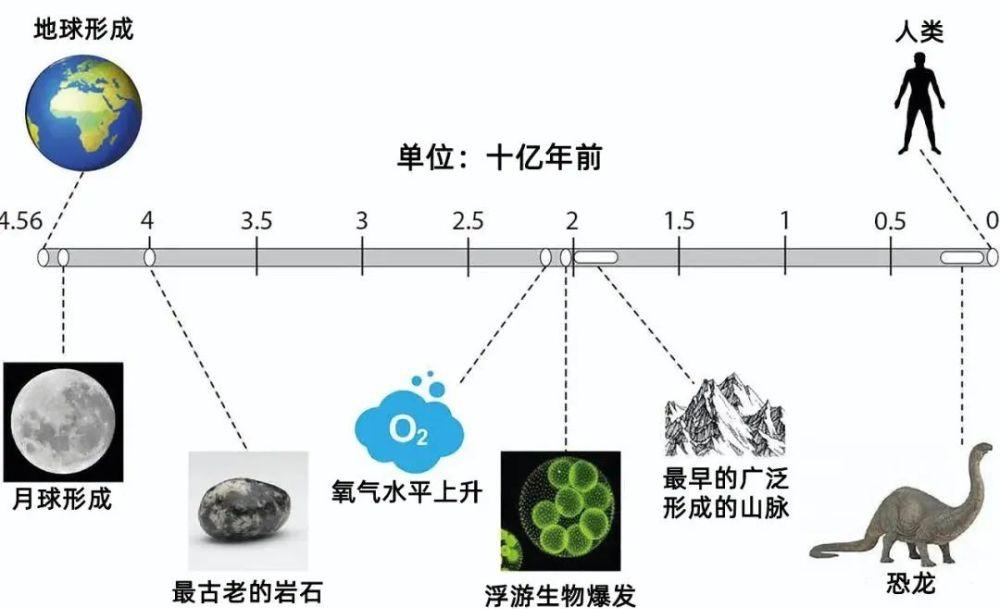The Himalayas, the Alps, the Rockies, the Andes... We have almost no way of imagining a planet without mountains.
Mountains are more than just a beautiful backdrop for vacation photos, they are vital to the functioning of the world, they affect many aspects such as weather, climate, freshwater distribution and rock erosion.
But mountains didn't exist from the very first moments of Earth's formation. They didn't begin to form widely on Earth until about 2 billion years ago, when the course of Earth's history actually spanned about 2.5 billion years.

The timeline of the formation of Earth's mountain ranges | John Parnell via The Conversation
Although the formation of mountains is often associated with collisions of tectonic plates, collisions between plates can cause huge rocks to be pushed uplifted. But recently, a new study revealed how primitive marine life "participated" in orogeny in ways we didn't expect.
Before the advent of mountain ranges on Earth, plate movements that reshaped the distribution of oceans and continents occurred only on a limited scale. However, the movement of these plates is crucial to orogeny.
The pressure of one plate on another (usually an ocean plate hitting a continental plate) causes the ocean rock plates to break, which stack on top of each other as they push. Over millions of years, they piled up and mountains formed.
However, a huge pile of stones on such a scale must require "lubricant", otherwise the friction will eventually stop the process. This "lubricant" is carbon. New research suggests that large amounts of biocarbon in ancient oceans play a key role here, bringing mountains to the planet.
The study believes that about 2 billion years ago, when rich nutrients entered the water, the number of life forms such as plankton in the ocean exploded. This has the potential to respond to large oxidation events, in which photosynthetic bacteria begin to produce large amounts of oxygen, which is able to support new forms of single-celled life, such as large numbers of marine plankton.
At the time, there were no more complex life forms, but the cells of these single-celled organisms became larger and contained more carbon.
These tiny creatures quickly sink to the bottom of the sea after death, and are soon buried in the mud on the seabed, forming rocks containing super high levels of carbon. This carbon turns into graphite under the influence of heat and pressure.
Graphite is an excellent lubricant. We all know that in life, with graphite, whether it is locks, hinges, gears or wheels, even zippers become easier to move. Of course, rocks are no exception.
Simplified schematic of the orogeny process. The stones are stacked and gradually form mountains under the lubrication of carbon. |John Parnell via The Conversation
Although the oldest mountains formed 2 billion years ago have now been smoothed out, we can still find their roots. Evidence of graphite's involvement in orogeny can still be found in these places.
The study looked at 20 cases of orogeny from around the world, from Australia to China, from South America to the Arctic. In northwestern Scotland, for example, sliding surfaces of graphite-containing rocks in ancient mountain ranges in harris, Iona and The Gerloch region can be found, which were formed in conjunction with the earliest orogenic earthquakes.
This evidence proves that the abundance of graphite accumulated by tiny marine organisms has had a profound impact in an unexpected way through the process of lubricating orogeny.
In fact, this process continues, and other geological layers, such as salt, also play a role. But graphite deposits from 2 billion years ago were particularly "silky", and some may have been involved in orogeny more than once.
| Of the Himalayas: Karunakar Rayker via Flickr under CC BY
For example, the most majestic mountain range on Earth, the Himalayas, is formed by the accumulation of ocean rocks between India and Eurasia. From a geological point of view, it is actually very young, only about 50 million years old.
Scientists learned from marine fossils found on the Tibetan Plateau, thousands of meters above sea level, that the mountains originally came from the ocean. The rocks are pushed all the way north until the ocean disappears, leaving behind towering rocks.
In the process, carbon-rich rocks from older oceans slide against each other, allowing the orogeny to proceed smoothly. These rocks have been sliding for the first few million years after their formation, and then after a period of "long dormancy", they have slid again, eventually helping the Himalayas rise.
In fact, in the distant future, they may also have slippage. In other words, even long after humans disappeared, those ancient plankton would continue to have an impact on The Planet.
Of all the ancient mountains explored, each has a large record of graphite. Previous studies have suggested that graphite makes tectonic plates more fragile, which facilitates mountain formation. New research has found that biochar from marine life is a more critical beginning of this process.
Without biochar from countless plankton cells, the distribution of tectonic plates might have evolved so differently that we wouldn't even see these mountains today.
In this sense, life has indeed shaped our planet.
bibliography
[1]https://theconversation.com/how-plankton-helped-create-the-earths-mountains-2-billion-years-ago-173076
[3]https://phys.org/news/2021-11-explosion-ocean-life-built-mountains.html
#图片来源: Cover image: Karunakar Rayker via Flickr under CC BY
#创作团队:
Original author: John Parnell (Professor of Geology and Petroleum Geology, University of Aberdeen)
Compile: M ka